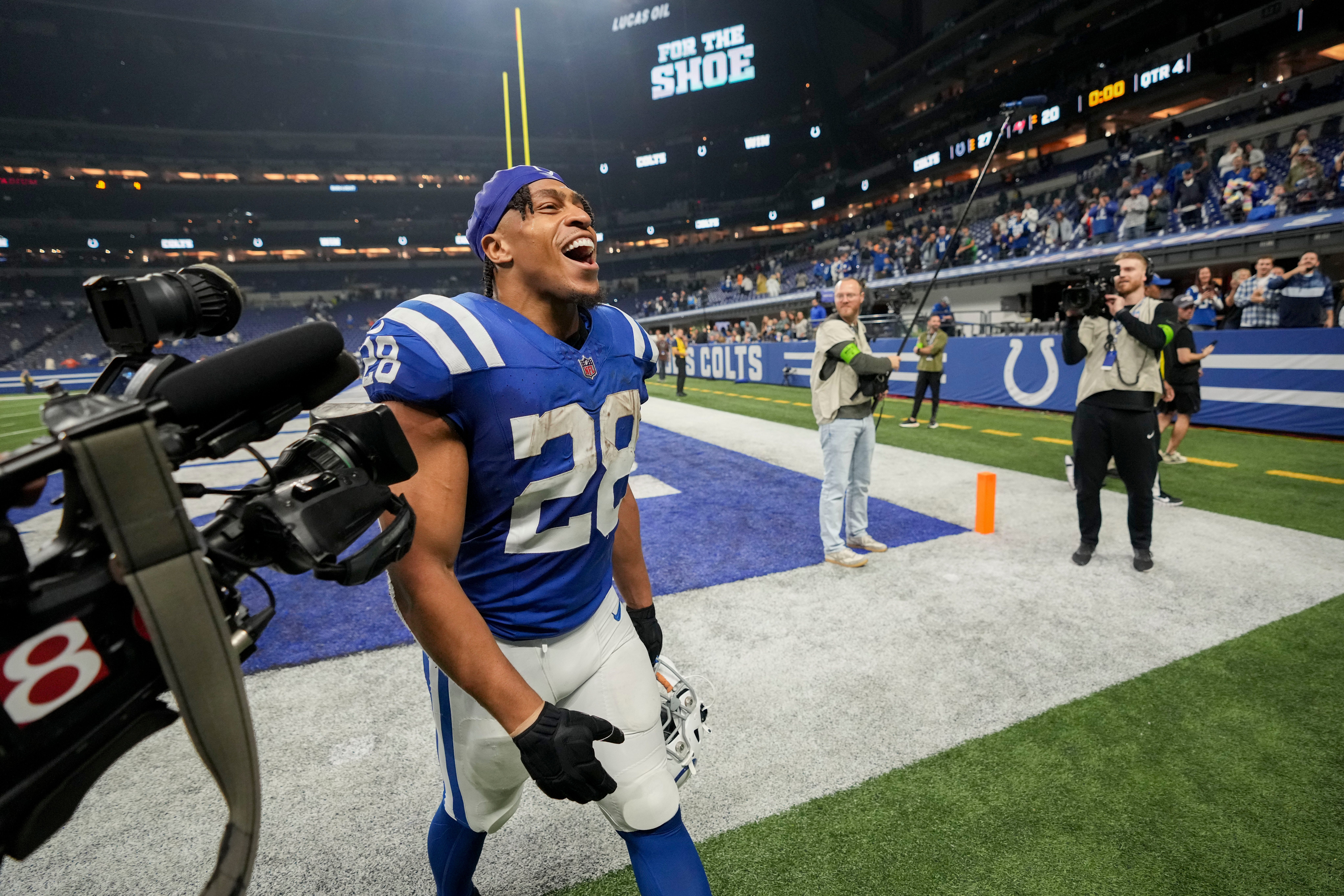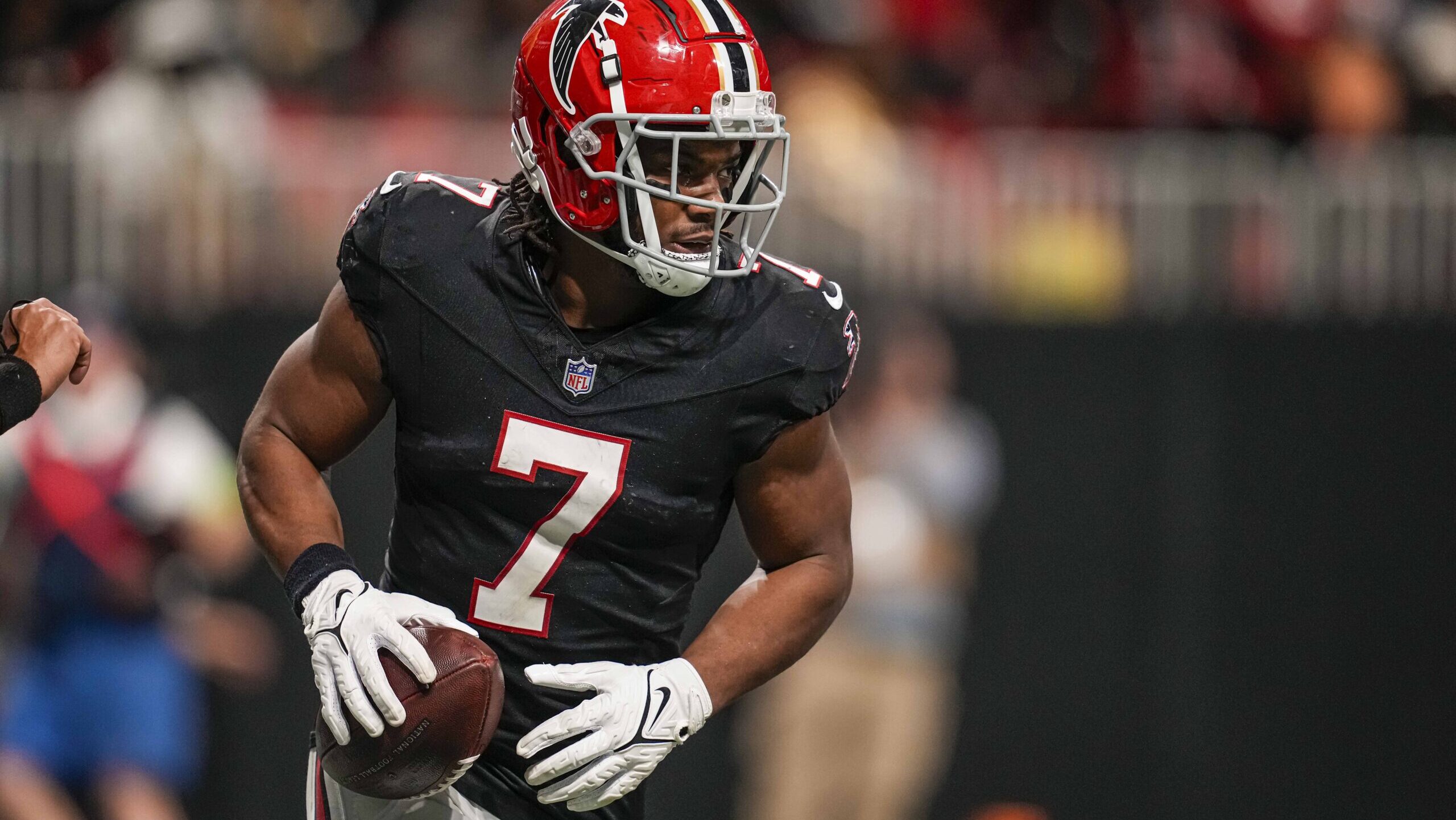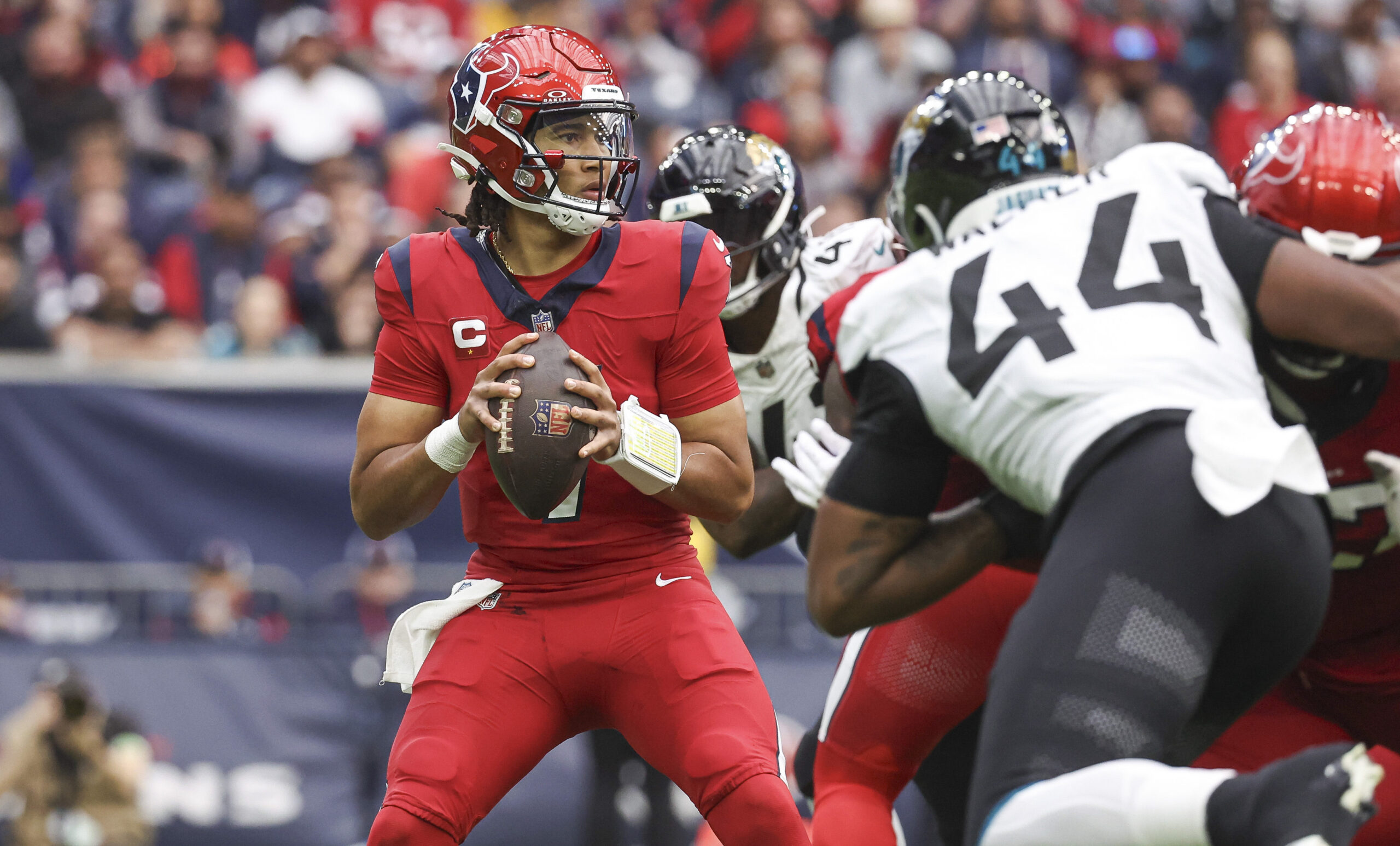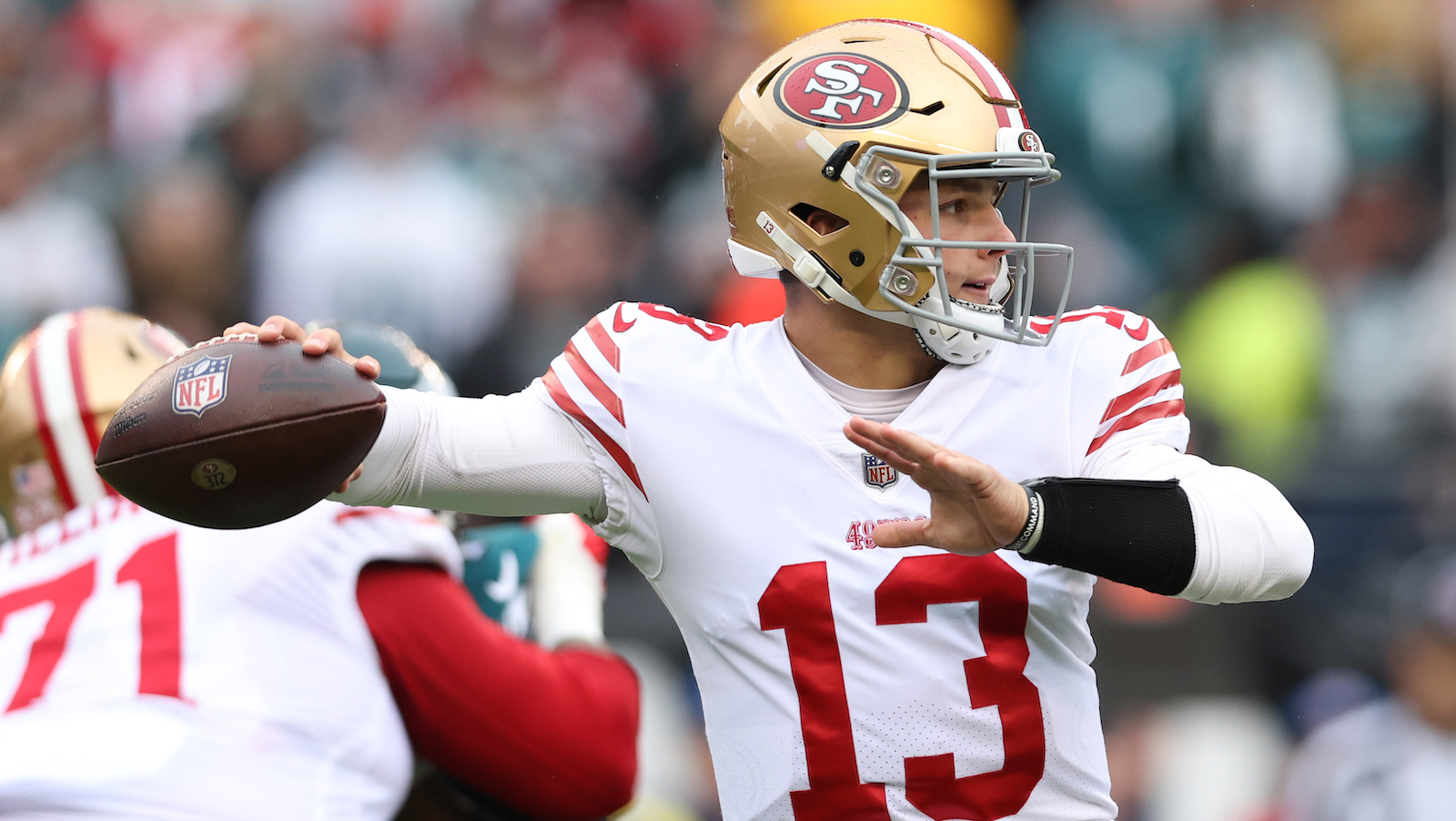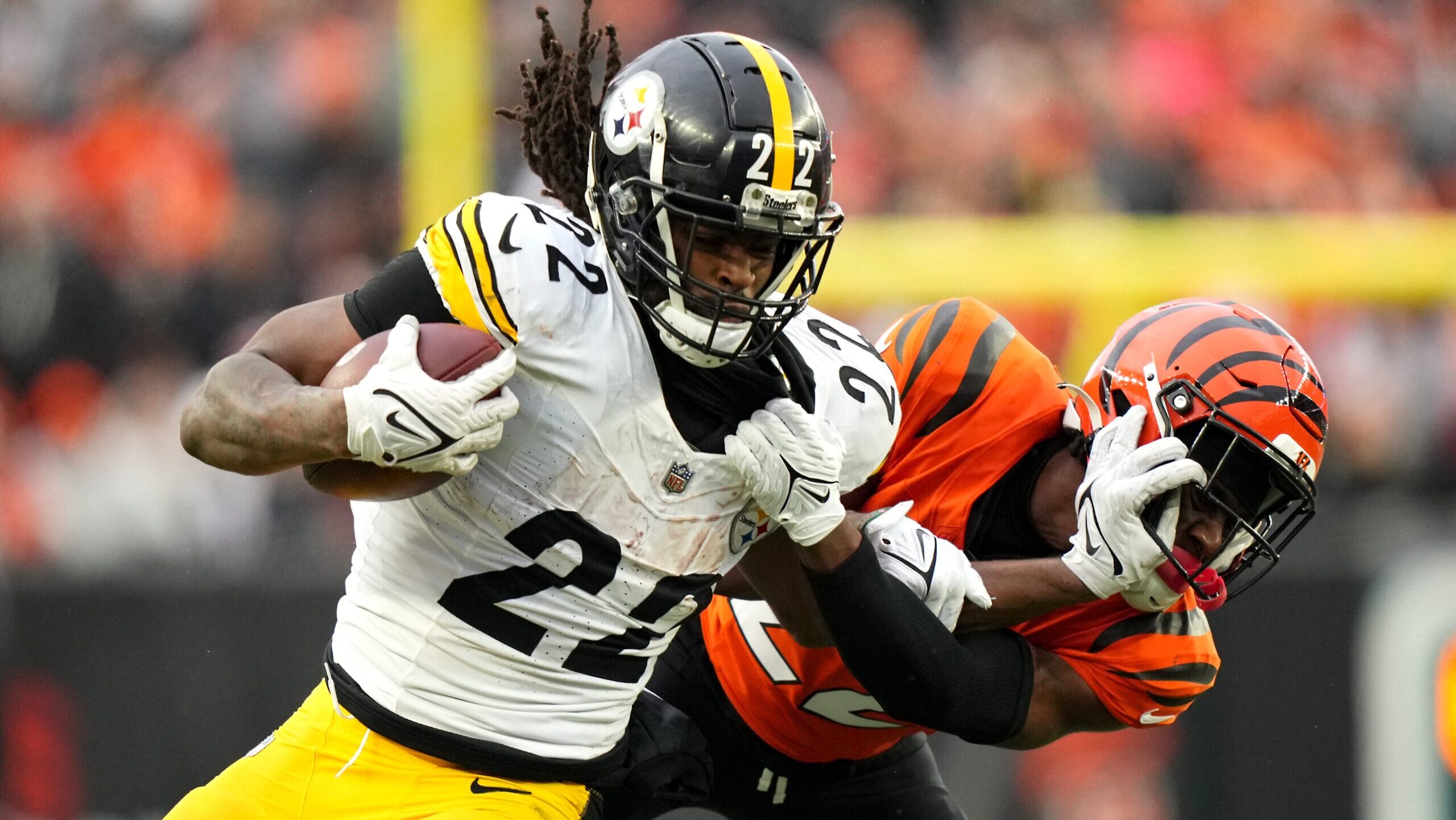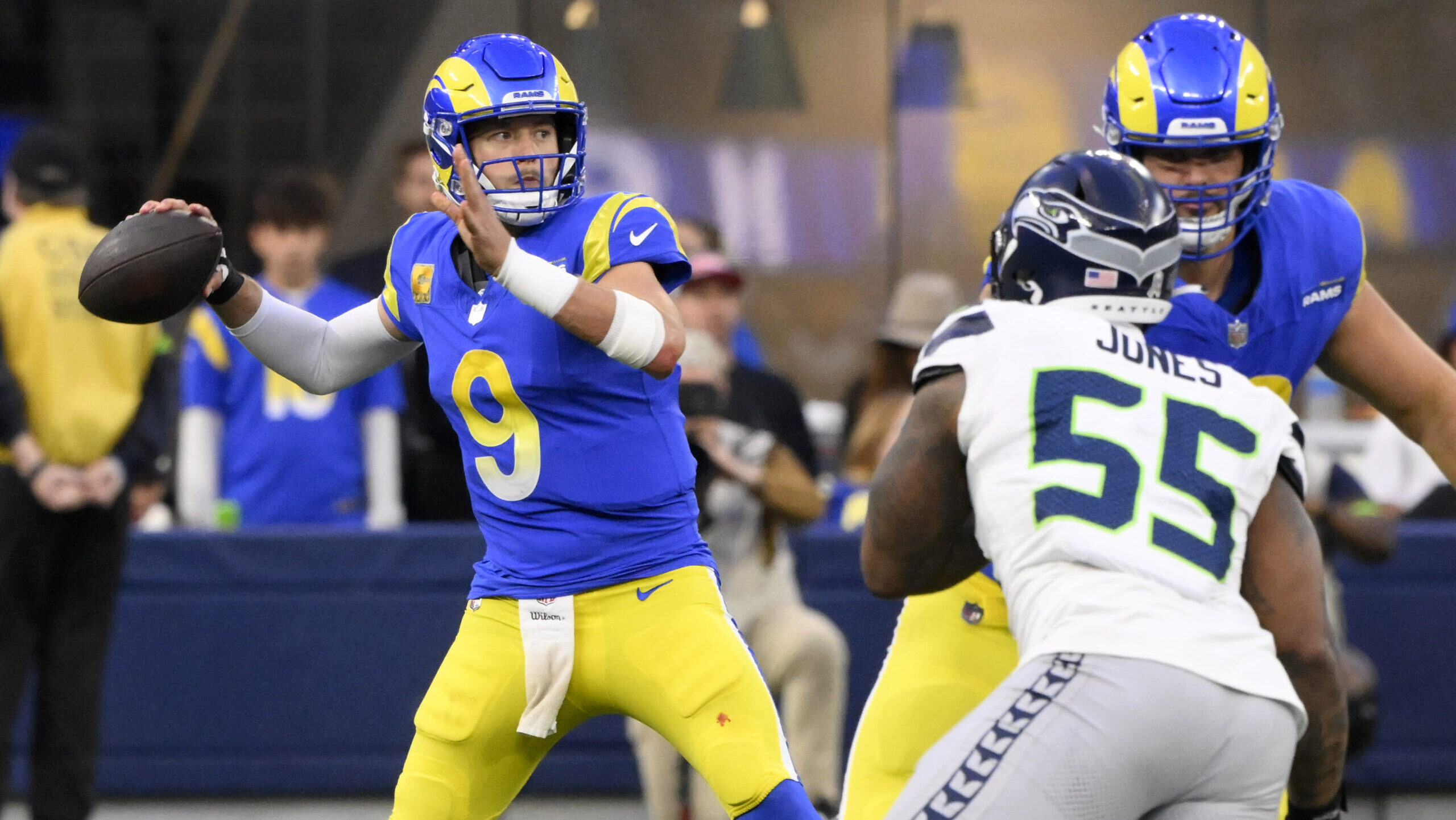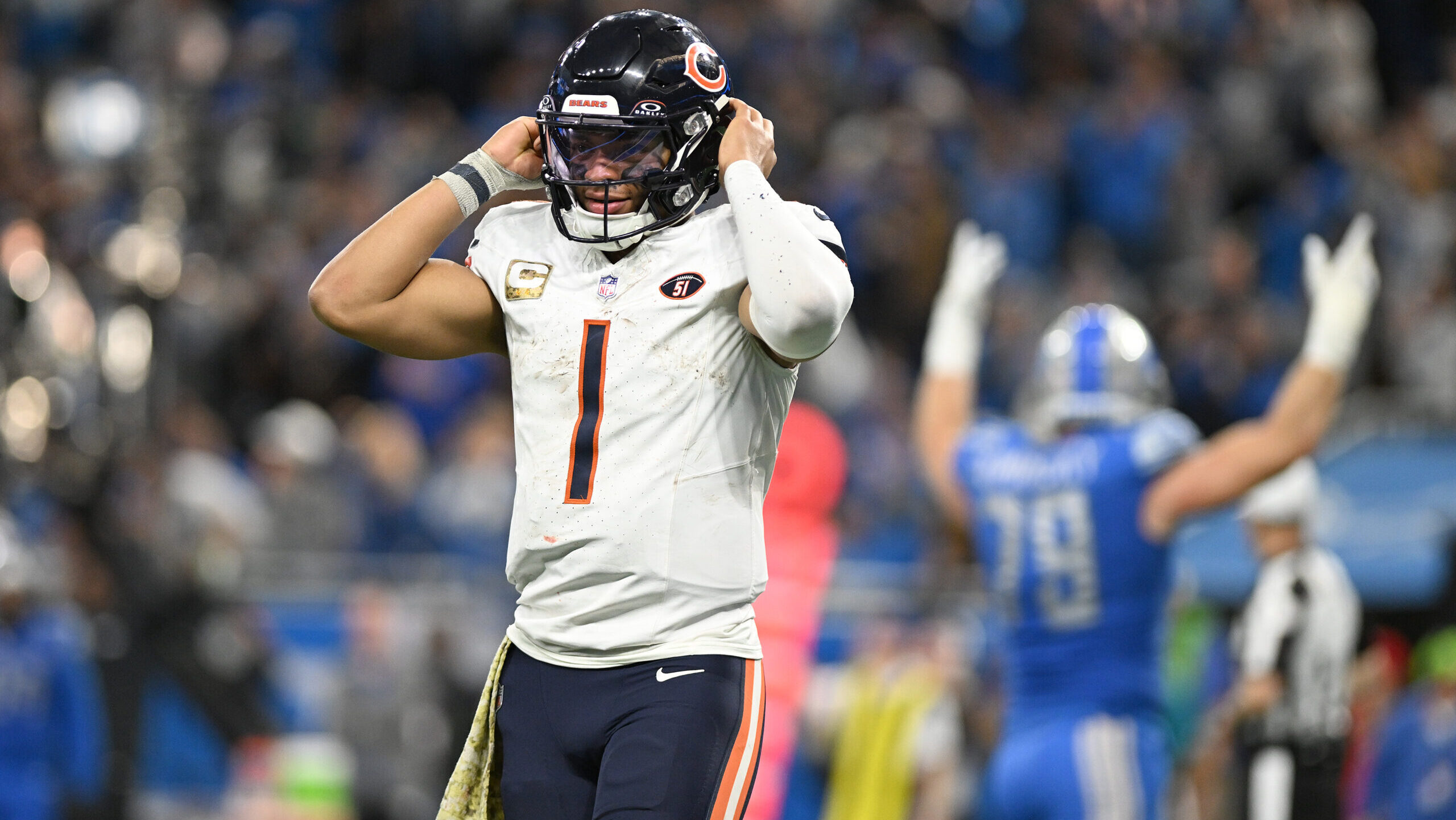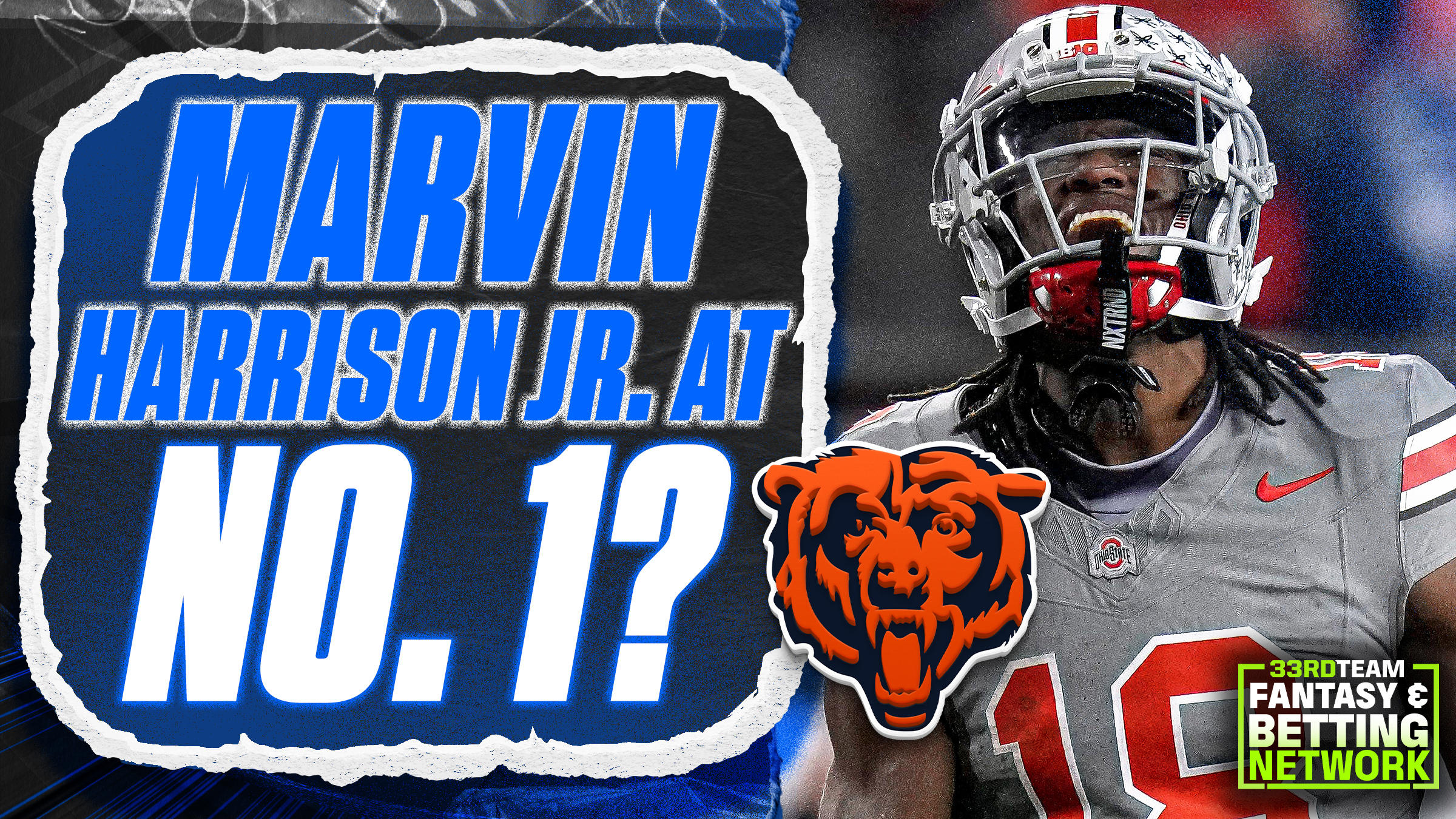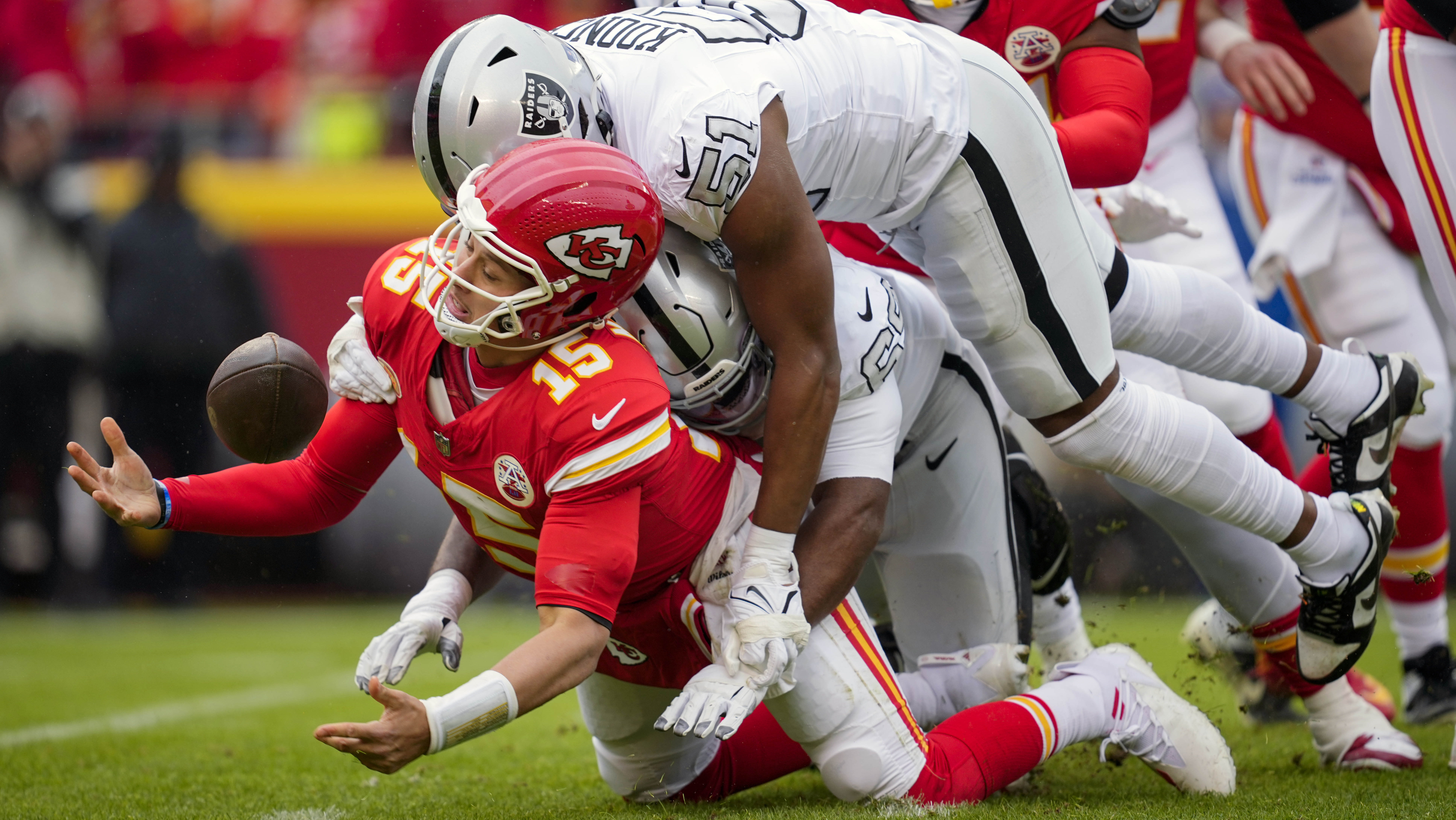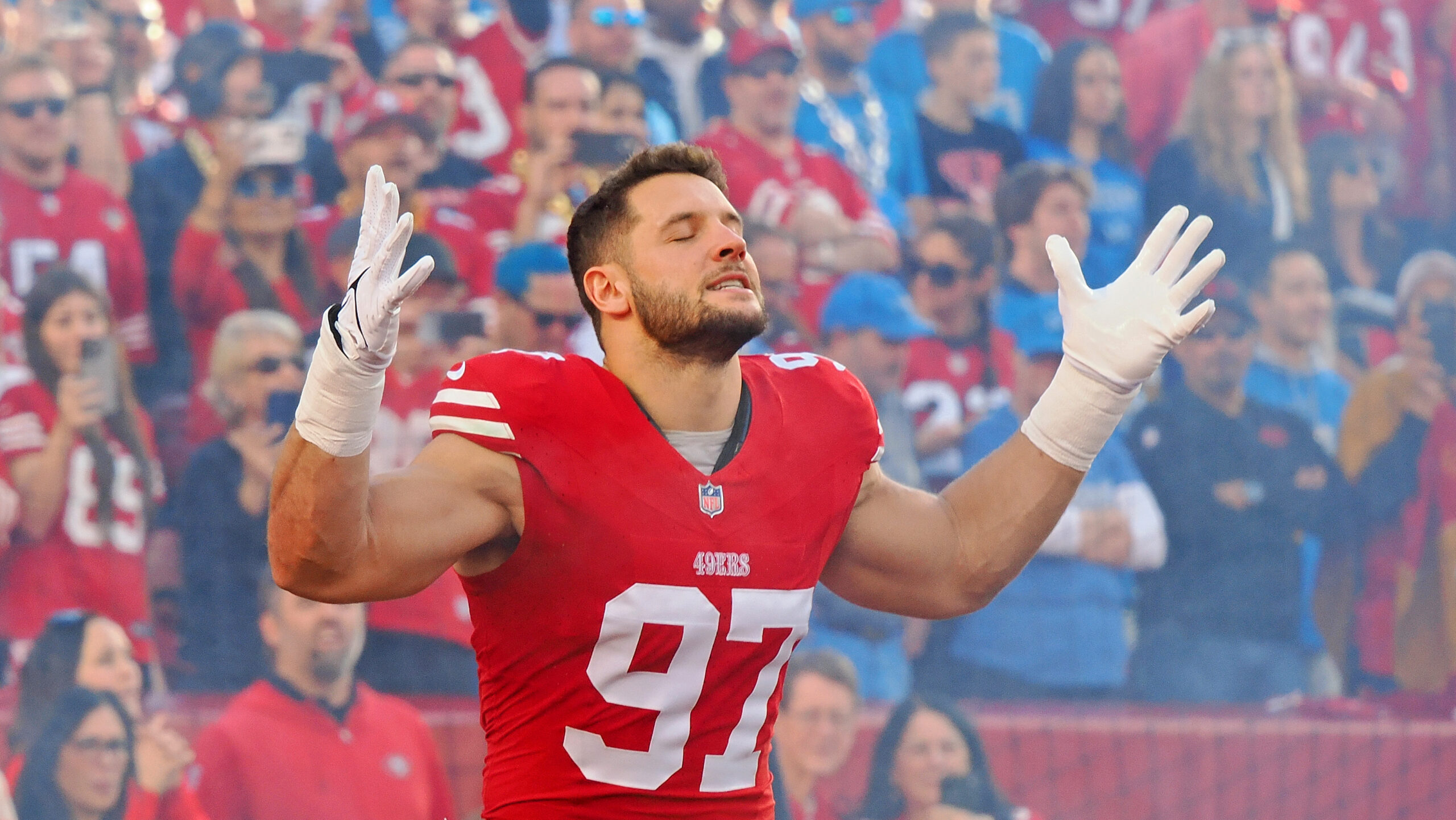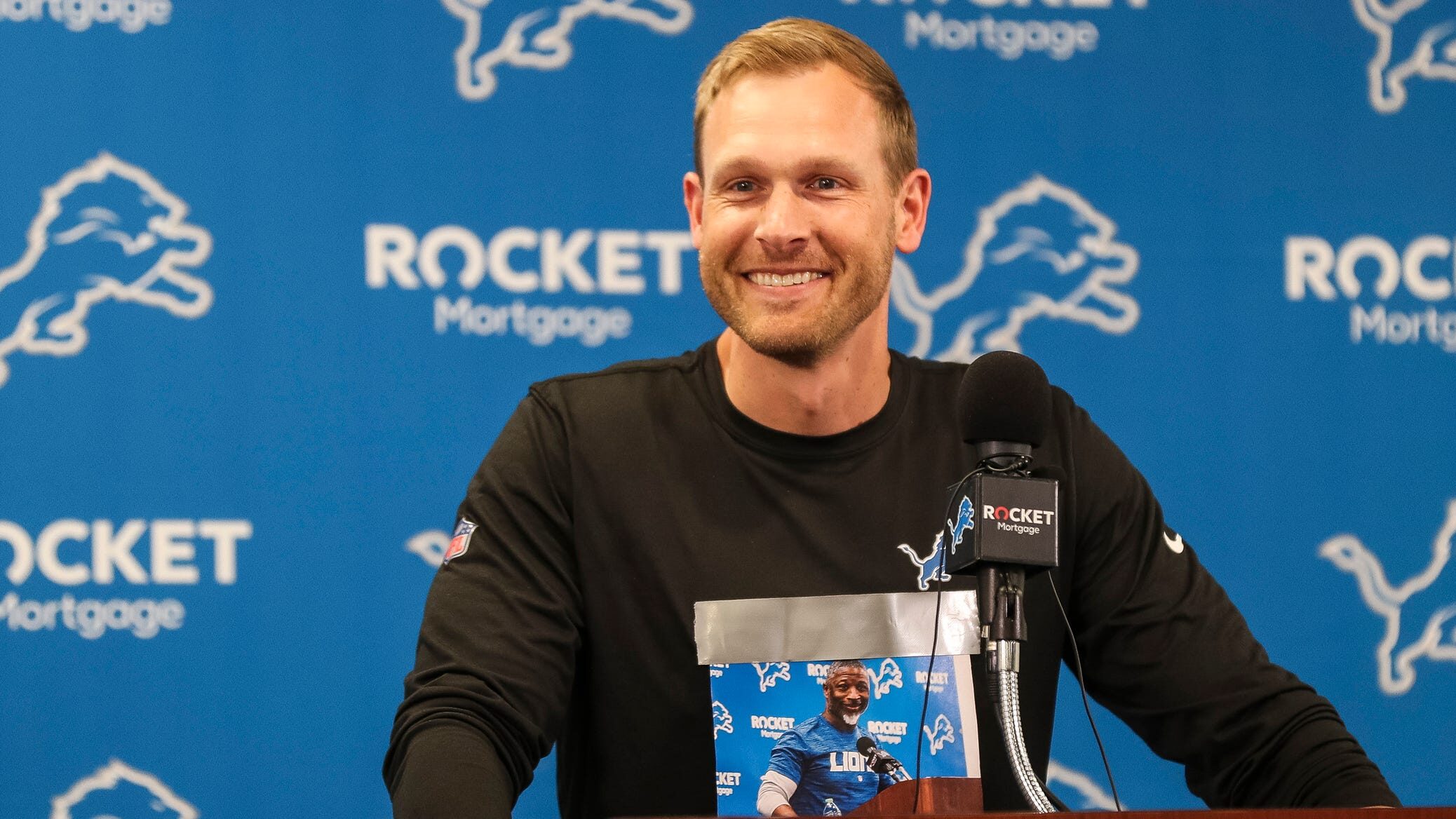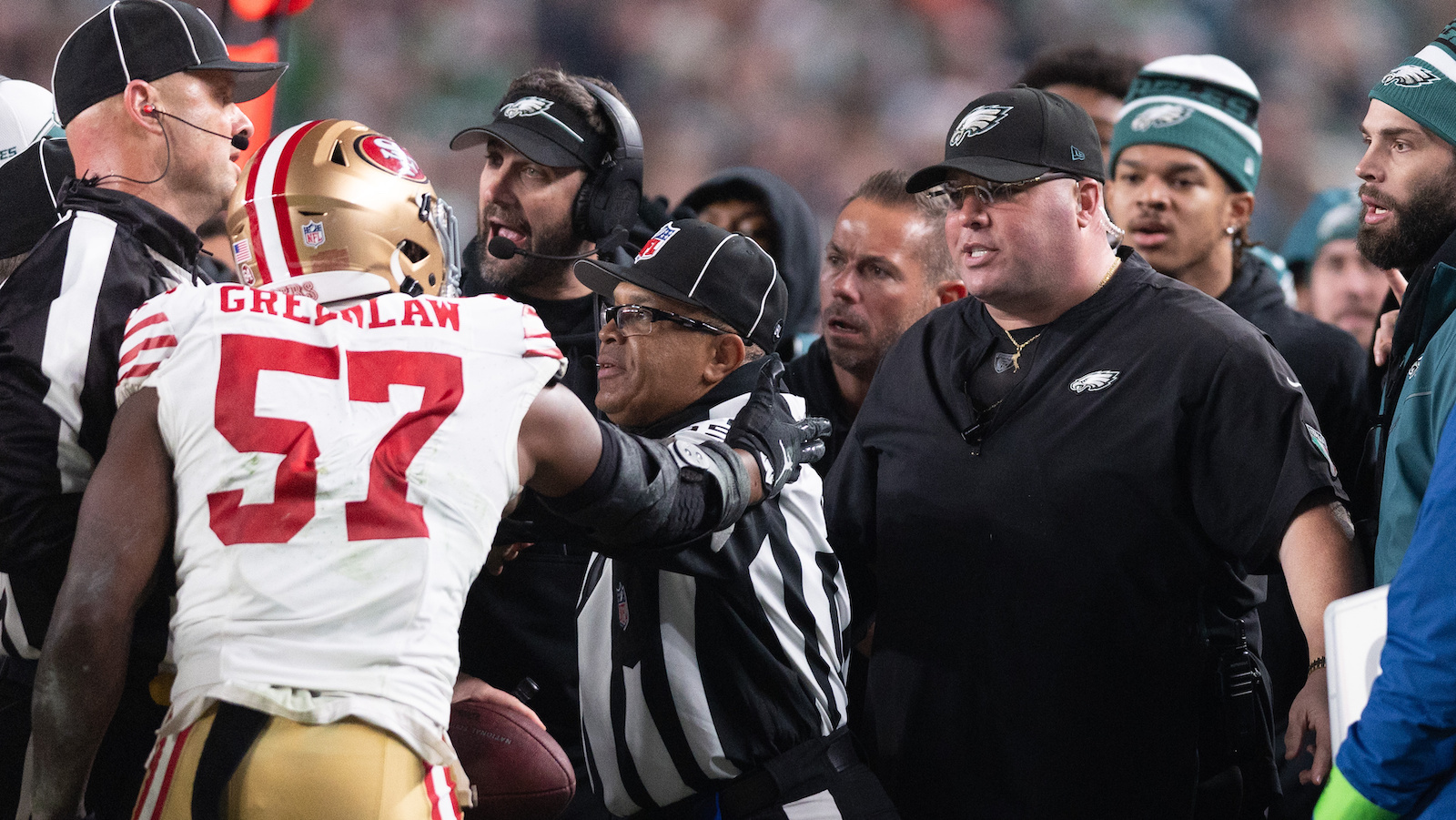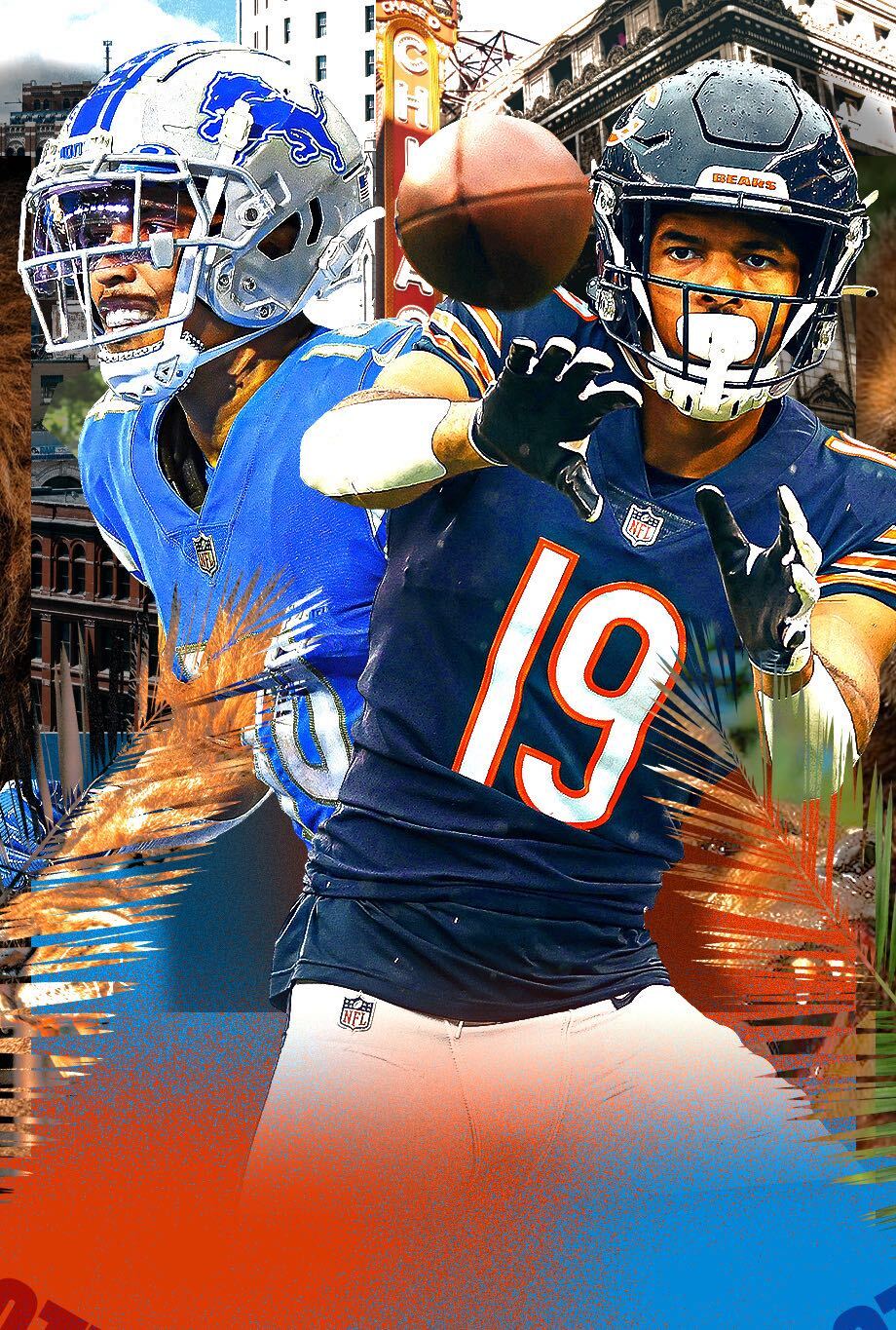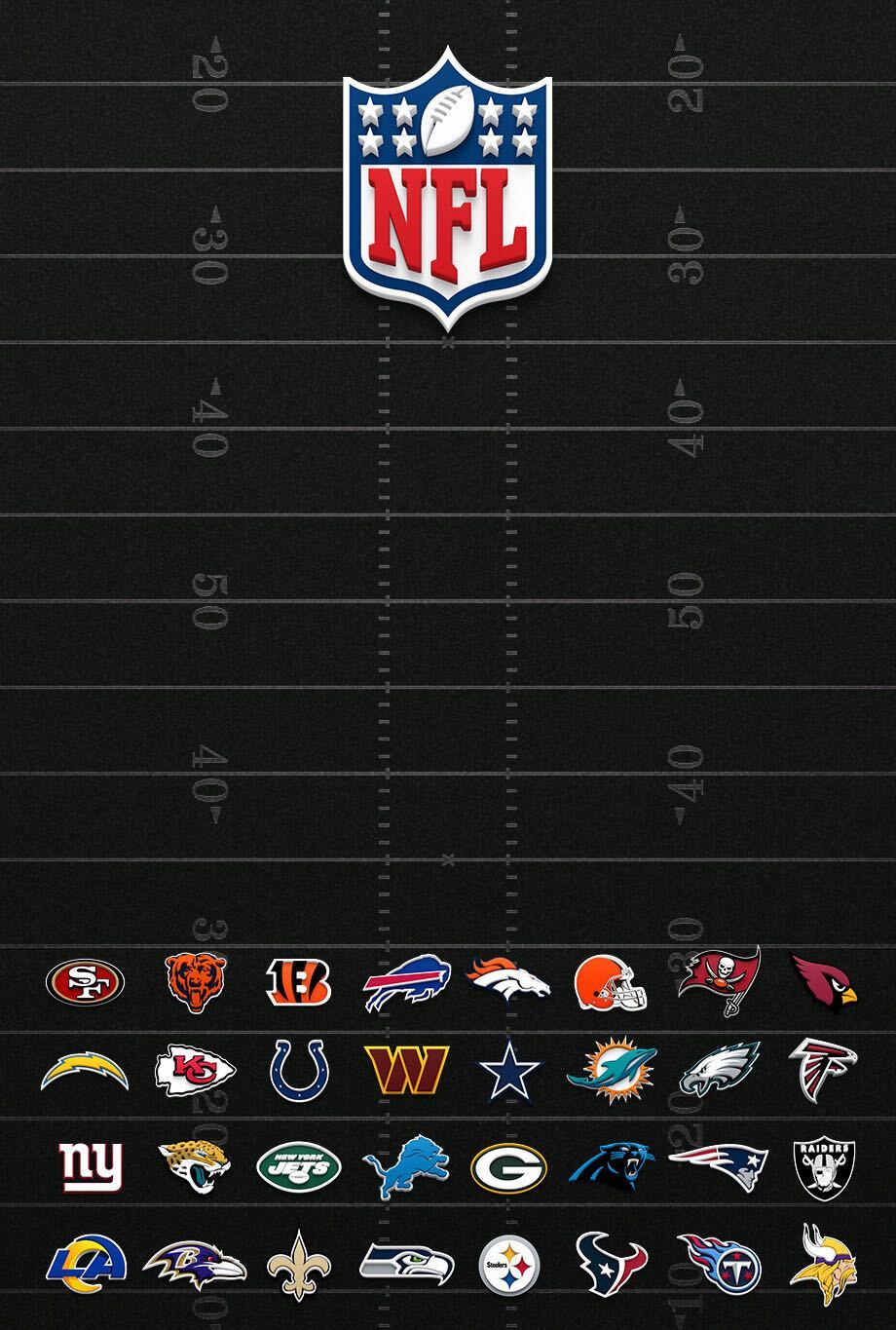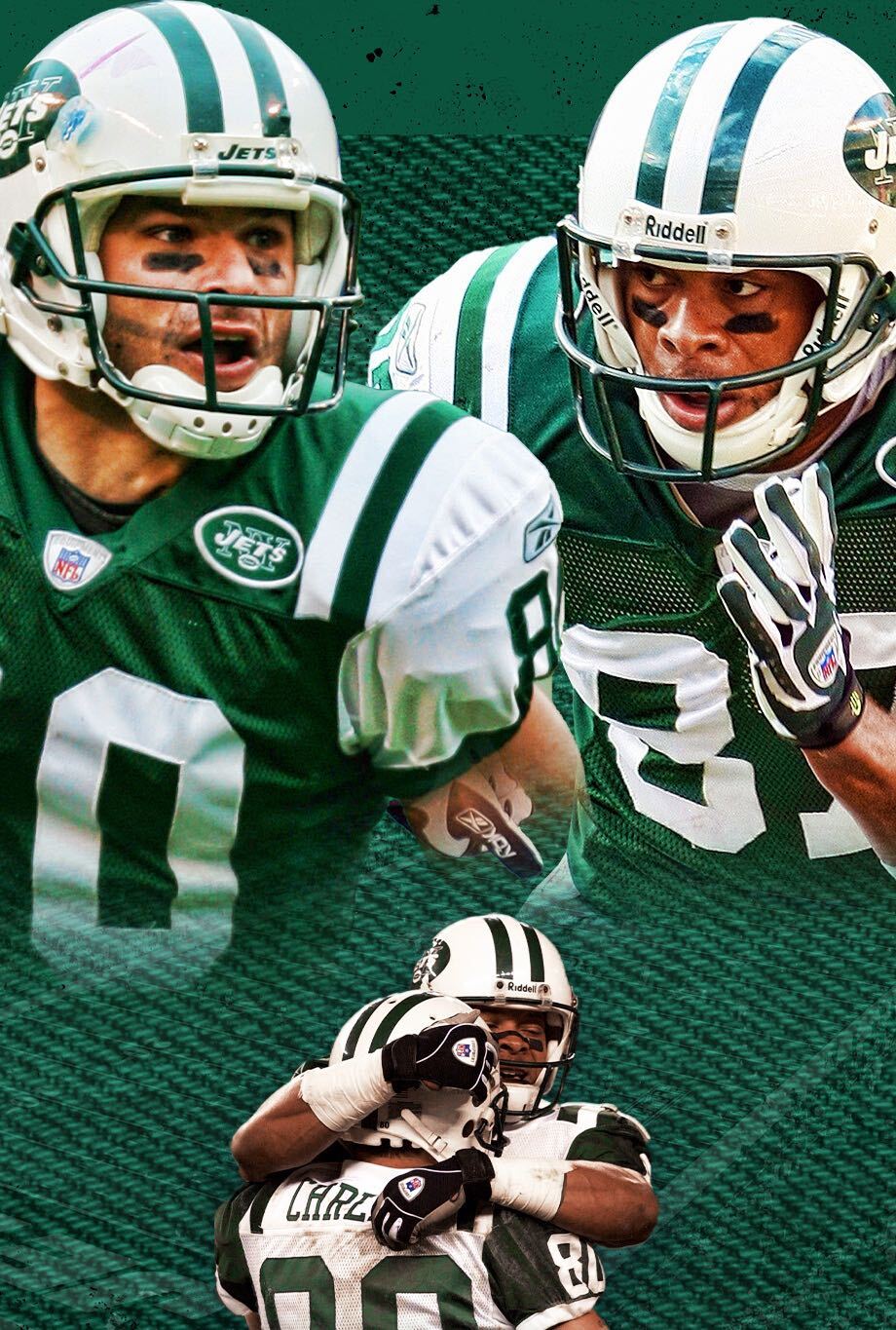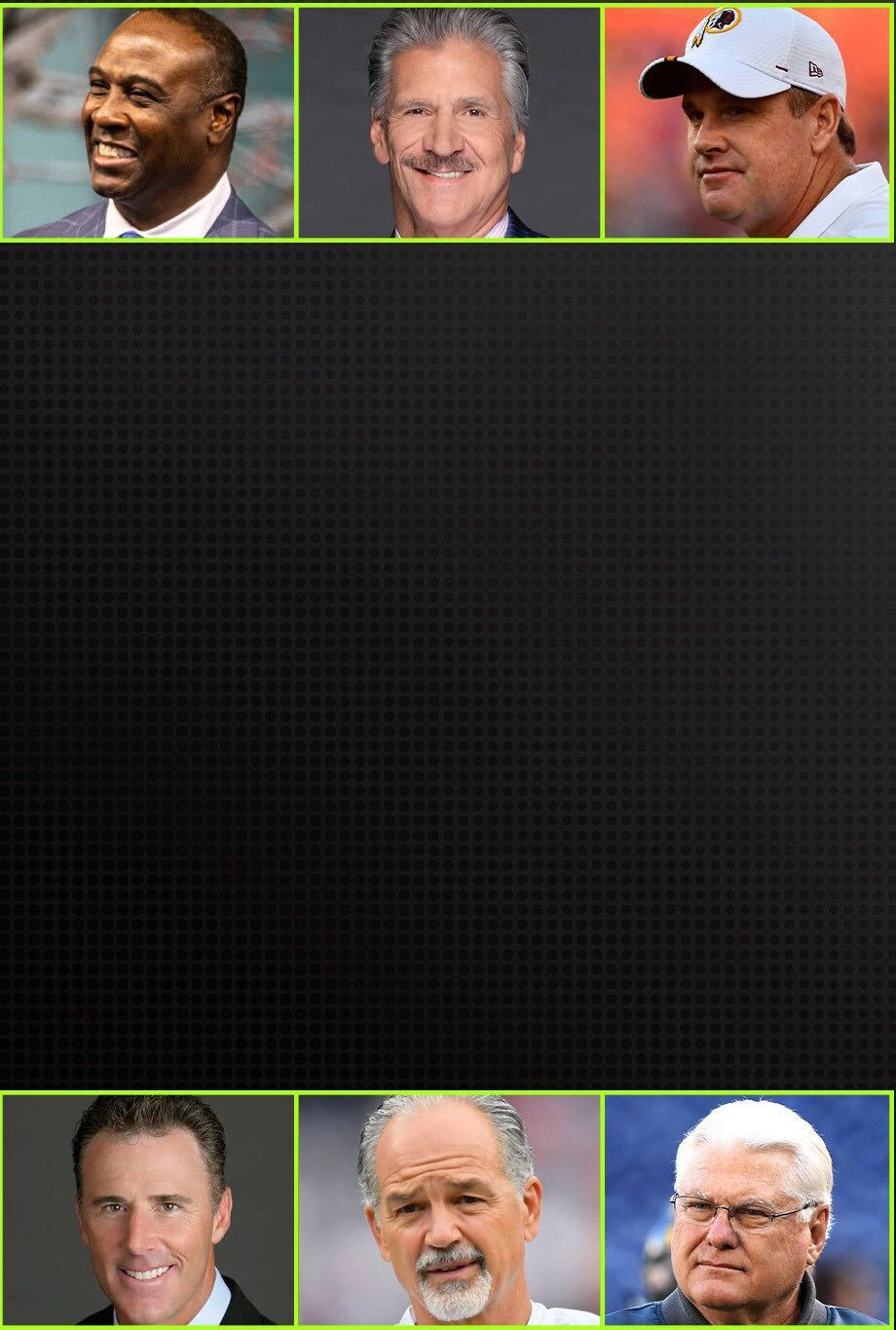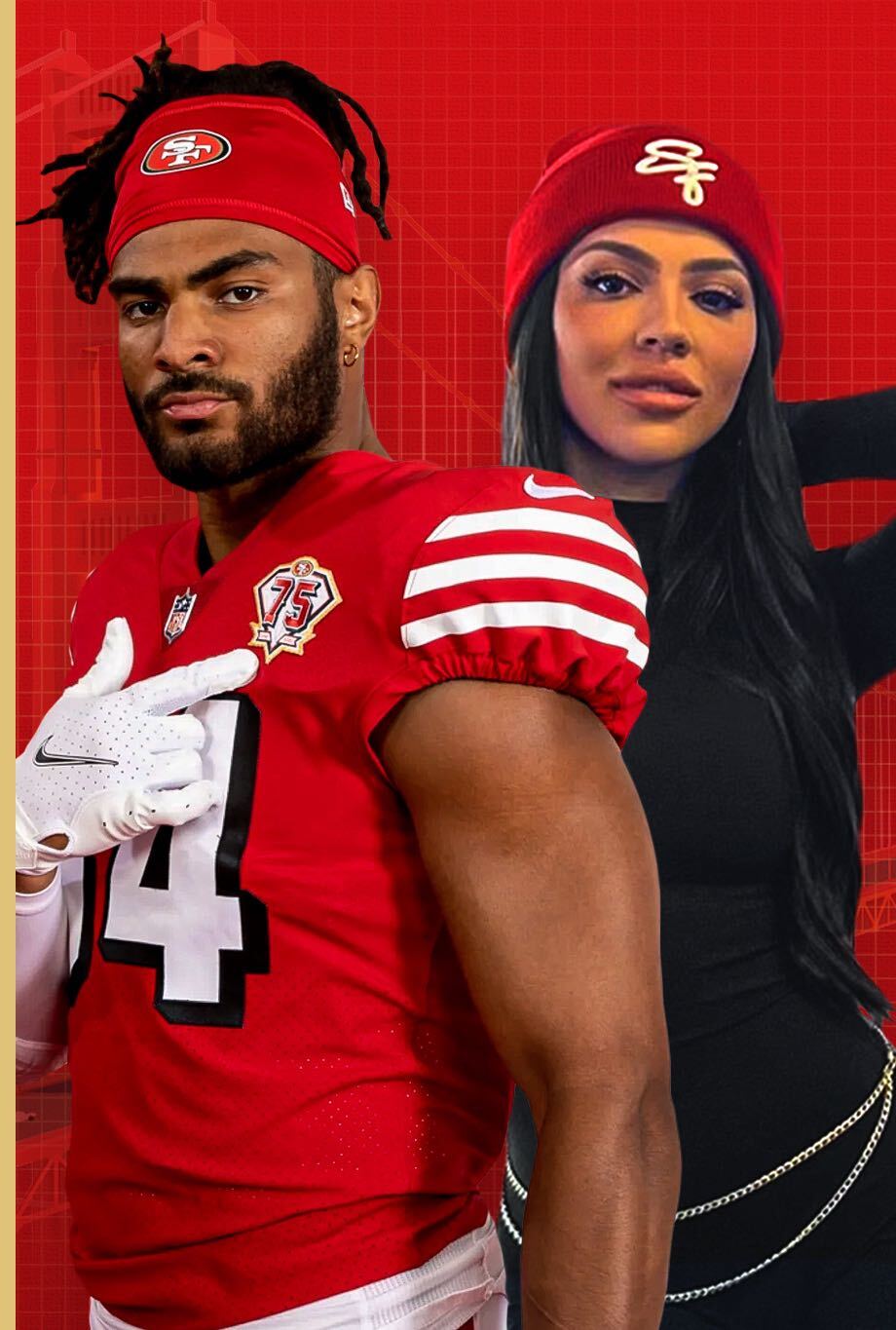2023 Fantasy Football: Post-Draft Rookie Superflex Rankings
Fantasy 5/16/23
Draft capital matters for a couple of years anyway. In most cases, the more a team invests in a player, the more they want him to succeed. I will concede a player’s draft capital is about 50 percent of the equation when determining his dynasty value, but that still leaves half of the equation to be determined.
I combine a player's draft capital with my pre-draft rookie rankings. These rankings are biased, but all rankings are. However, these rankings are not influenced by the echo chamber that the fantasy community becomes. I have not looked at rookie rankings from anyone at The 33rd Team or on Twitter.
I have looked at the analysis from trusted sources, listened to dozens of podcasts and scouts and watched highlights on YouTube. At this point, I’ve also been through a half-dozen rookie drafts and have a gauge of where these players are being drafted. I rely on production profiles and pay attention to why some players produce and others don’t.
The first 35 players have individual write-ups, while players ranked 36 through 70 are listed at the bottom.
Players We Want
1. Bijan Robinson, ATL (1.08), RB
I initially didn't like the Atlanta Falcons as a landing spot, but after considering the scheme and success of the previous (below-average) running backs, Bijan Robinson should easily be a top-2 running back. Robinson turned 21 in January and is widely considered the best running back prospect since Saquon Barkley. He forced 112 missed tackles this past season at Texas, creating 1,006 yards after contact. He totaled 4,215 yards, 7.0 yards per touch and averaged 13.4 yards per reception during three seasons at Texas.
2. Anthony Richardson, IND (1.04), QB
The Indianapolis Colts selected QB Anthony Richardson with the No. 4 overall pick. This is a premium landing spot for Richardson; his ceiling is through the roof. He enters an offense and team basically a quarterback away from playoff contention. He may need time to develop into a better passer, but his rushing ability and athleticism will make the offense more dynamic and versatile.
3. C.J. Stroud, HOU (1.02), QB
C.J. Stroud is on a mission. He looked pissed off about being passed up for the first overall pick. I always feel good about drafting players with a chip on their shoulder, whether warranted or not. Stroud gets criticized for not scrambling or rushing much, but that’s generally because he didn’t need to. In his 25 starts during the past two seasons, Stroud threw 85 touchdown passes to just 12 interceptions. The NFL will be a major adjustment for Stroud, going from a strong favorite every week to a massive underdog most weeks.
4. Bryce Young, CAR (1.01), QB
Bryce Young was the first overall pick, but Carolina does not have the support system to raise his value. Consider me one of the "size matters" crowd, even though I’ve always been told differently. Young won the Heisman Trophy in 2021 and followed that up by becoming the only quarterback in Alabama history to throw for more than 3,000 yards in back-to-back seasons.
He is one of the best prospects in terms of moving behind the line of scrimmage. Young had a class-high 14.9 percent touchdown rate while throwing for 7.7 yards per pass attempt (second) when operating from outside of the pocket in 2022.
5. Jahmyr Gibbs, DET (1.12), RB
With the Detroit Lions trading away D'Andre Swift and reaching 15-20 spots for Jahmyr Gibbs, I'm sliding Gibbs ahead of all the rookie wide receivers. Gibbs spent his first two college seasons at Georgia Tech, posting a 24 percent dominator rating as the team's RB1 alongside future NFL running back Jordan Mason.
For his junior year, he transferred to Alabama and led the team with 926 yards rushing and flashed receiving ability by catching 44 passes for 444 receiving yards. His upside may be capped a bit by David Montgomery, but it could also save Gibbs from taking a pounding between the tackles.
6. Jaxon Smith-Njigba, SEA (1.20), WR
Jaxon Smith-Njigba was the first wide receiver drafted, but not by much. Smith-Njigba was expected to go a little earlier, but this is a good landing spot for his skill set. He may not see a full workload right away, but he will play, and he's a Tyler Lockett injury away from being the next Doug Baldwin.
I have little doubt he will translate well to the NFL. Smith-Njigba totaled 95 receptions for 1,606 yards and nine TDs while playing alongside two first-rounders in Garrett Wilson and Chris Olave. Smith-Njigba capped that season off with a 15-347-3 game in the Rose Bowl with Wilson and Olave sitting out. In addition, he’s still only 21.
7. Jordan Addison, MIN (1.23), WR
Jordan Addison landed in the best spot of the wide receivers for immediate targets. He can stay on the outside and run deep routes all day; we are hoping for DeSean Jackson comp. Addison is still only 20, with 219 career receptions, 29 TDs and 3134 yards at two different schools, Pitt and USC.
Addison was the 2021 Biletnikoff Award Winner and was one reason Kenny Pickett’s stock rose tremendously last year, as Addison caught 100 passes for 1,593 yards and 17 touchdowns at Pitt. At USC this past season, his production dropped (59-875-8), but he still maintained his higher-end efficiency.
8. Quentin Johnston, LAC (1.21), WR
I was actually a bit baffled the Los Angeles Chargers took Quentin Johnston instead of Addison. Addison seems like an adequate replacement for Keenan Allen, while Johnston is much more the Mike Williams type — just not as good. It's a talented offense with a new offensive coordinator that should air the ball out, giving Johnston solid value for several years.
9. Zay Flowers, BAL (1.22), WR
Zay Flowers is the Steve Smith prototype that obviously will fit well in the Baltimore Ravens' offense under new offensive coordinator Todd Monken. Flowers played for four years and will be 23 early in the season. Boston College is a run-heavy offense, so his career stats don’t look great. In 2022, he had a 46.7 percent college dominator, 29.6 percent target share, accounted for 29.8 percent of the team receptions, 36.4 percent of the receiving yardage and 57.1 percent of the team's touchdown catches.
Round 2 Value
Yes, I realize I only have nine players listed in Round 1 — and I should probably call it Tier 1 — but the first nine players are truly the only guys I feel comfortable drafting in the first round. If your league is tight end premium (1.5 PPR), then you should include the first three tight ends here. If you have a later pick than 1.09 in a league that isn’t tight end premium, try to trade for a 2024 first-rounder and maybe a little side-piece.
10. Zach Charbonnet, SEA (2.21), RB
In a surprise turn of events, the Seattle Seahawks drafted Zach Charbonnet in the late second round. He will split the backfield with Kenneth Walker, so it doesn't seem like a great fit. Charbonnet has the draft capital, so we should see him get 10-12 touches a game. After being stuck in a timeshare for two seasons at Michigan, Charbonnet transferred to UCLA where he racked up 3,014 rushing yards, 51 receptions (2.3 per game) and 27 touchdowns over the past two seasons. He is a Walker injury away from being this year's Walker.
11. Devon Achane, MIA (3.21), RB
Coach Mike McDaniel was visibly excited about drafting Devon Achane in the late third round. We can expect 10-15 touches per game right from the start. Achane is small for an NFL running back, but he's quick as lightning. He got the chance to be the main running back for Texas A&M in 2022 after Isaiah Spiller was drafted, and Achane did not disappoint.
He rushed for 1,100 yards and eight rushing TDs while catching 36 balls (3.6 per game) for 196 yards on 44 targets. Achane also returned kicks, which will ingratiate him with the team and get him extra touches. Special team's play usually translates well to NFL success.
12. Kendre Miller, NO (3.08), RB
Drafted by the New Orleans Saints at 3.08, Kendre Miller should do well in New Orleans, even though the backfield is crowded. He seems a bit redundant to Jamaal Williams, but it does seem like the Saints might be ready to write off Alvin Kamara. Miller may be a two-down running back since he lacks pass-catching skills.
He was limited in his first two college seasons, splitting touches with Zach Evans, but when Evans transferred Miller skyrocketed. Miller produced 1,515 yards and 17 touchdowns on 240 touches (6.3 yards per touch) last season.
Tight End Conundrum
The tight end position carries little value in fantasy football unless you get an elite player. The problem is we rarely know which tight ends will be elite in the NFL.
13. Dalton Kincaid, BUF (1.25), TE
The Buffalo Bills moved up a few spots to snag Dalton Kincaid with the 25th overall pick. Many analysts believe Kincaid will be used primarily as a slot receiver, as Buffalo has said they drafted him for having the “best hands” their scout has ever seen. I still don't think we will see him put up elite numbers until Knox or Diggs is out.
Kincaid has some of the best ball skills we've ever seen from a tight end prospect, with only two drops on 108 catchable passes in the last two seasons and 16 of 27 in contested situations. He’ll turn 24 during the 2023 season, but age doesn’t matter all that much at tight end. He only played one year of high school football, of course, he was the typical basketball-playing tight end.
14. Michael Mayer, LV (2.04), TE
The Las Vegas Raiders is a great landing spot even though there will be a target squeeze this year. Darren Waller is no longer in Vegas, and Jimmy Garoppolo seems to favor targeting tight ends. Michael Mayer had a 35.8 percent college dominator and a 20.2 breakout age at Notre Dame. His college production is that of a top-end WR.
15. Sam LaPorta, DET (2.03), TE
Drafted by the Lions at 2.03, Sam LaPorta has a clear path to playing time. I expect LaPorta will continue the lineage of top-notch tight ends from Iowa, as he is another 90th-percentile athlete. LaPorta accounted for 30.4 percent of Iowa's receptions, 28.1 percent of its targets, and 32.0 percent of its receiving yards.
16. Jayden Reed, GB (2.19), WR
Green Bay Packers selected WR Jayden Reed with the No. 50 overall pick in the 2023 NFL Draft. Reed is rated highly in many reliable metrics, but we had no idea how highly he was going to be drafted. He should be the starting flank-Z wide receiver, in two-receiver sets, for the Packers right away. I'm expecting 80-90 targets in his rookie season. Reed can win against man (70.3 percent success) and zone (79.2 percent) coverage while also excelling against press coverage (77.8 percent). He was an age-19 breakout with a 28.7 dominator.
17. Marvin Mims, DEN (2.32), WR
Marvin Mims was selected by the Denver Broncos No. 63 overall, and I’m already concerned he's buried on the depth chart. He may have to wait a year or two to get the snaps we want, but Mims is only 21, had a 27.5 percent college dominator, and 22.4 percent target share at Oklahoma.
Mims is a true vertical flanker which differentiates him from most other receivers in this class. Of his 20 touchdown receptions in three seasons, 19 of them were on throws 20 or more yards downfield. According to PFF, he was: 10th in contested catch rate, ninth in yards per route run, second in YAC per reception, first in average depth of target and first in yards per reception.
18. Rashee Rice, KC (2.24), WR
Rashee Rice has been a yo-yo in my rankings all spring, but I had no idea he would be drafted in the second round and have the best quarterback in the NFL throwing to him. Rice didn't break out until his senior year, but was dominant in that season, gaining 1,355 yards on 96 receptions.
The buzz on Rice was fairly quiet leading up to the draft, but his draft capital and landing spot seem to have him poised to be a smash from the start. We will have to battle the narrative of the recent second-round Kansas City Chiefs' flubs, Skyy Moore, Mecole Hardman and DeMarcus Robinson, but we can benefit from recency bias if he falls deeper in drafts.
19. Jonathan Mingo, CAR (2.08), WR
Jonathan Mingo was also a surprise second-round pick when the Panthers took him at No. 39 overall. He didn’t break out until his senior year, but that is likely due to an injury in his junior year. He will join Adam Thielen and DJ Chark at the top of the Panthers' wide receiver room and have rookie Young dishing the rock. The range of outcomes is extremely wide; Mingo fits dynasty rosters best as a depth piece.
Superflex Factor
In Superflex dynasty drafts, quarterbacks drafted in the first round of the NFL draft should absolutely be taken in the first round of your dynasty rookie draft. I like Hendon Hooker more than Will Levis in dynasty fantasy football, but Levis was drafted a full round ahead of Hooker in the NFL draft.
Most analysts will have Levis ranked at the end of the first round or the beginning of the second. I won’t draft him unless I am rostering Ryan Tannehill or Levis slides to a point where it isn’t costing me anything to draft a high-potential bust.
20. Hendon Hooker, DET (3.05), QB
Taken by Detroit with the fifth pick in the third round, Hooker will likely sit and learn for the first year or two of his career. Hooker is 25 and coming off an ACL injury. He's been through a lot to get to this spot in life. The NFL looks for leaders over raw talent, and he has both.
At Tennessee, Hooker played 18 games (16 starts). He was 304-of-442, had 4,377 passing yards, a 68.8% completion percentage, 41 TDs, 3 interceptions, 9.77 AY/Att. and 65 completions of over 20 yards. He might be a career backup, but if you're rostering Jared Goff, it's worth drafting Hooker.
21. Will Levis, TEN (2.02), QB
I think it is unlikely the Tennessee Titans will get satisfactory trade compensation for Tannehill, so Levis probably start until late in the season. Levis is impressive physically, but he is a poor processor and has almost no pocket presence. Most of his college offense was scripted, he doesn't read coverages well and he got beat out by a no-name at Penn State before he transferred to Kentucky.
It appears NFL scouts and coaches like him because he worked in two different pro-style offenses in college and can call plays with 15-20 words and three different checks. Levis is also an older quarterback and will be 24 when the season begins.
22. Roschon Johnson, CHI (4.13), RB
There has been an incredible amount of hype on Roschon Johnson since the Senior Bowl, so being drafted by the Chicago Bears in the fourth round might have disappointed some analysts. He's already impressing in camp and working his way onto the field on special teams as most fourth-round picks do.
He was stuck behind Robinson on the depth chart at Texas, but he still had a 6.1 percent target share and 12.7 percent dominator, despite limited usage. Johnson converted from quarterback to running back as a freshman due to injuries. During that 2019 season, he handled 146 touches for 807 yards and eight touchdowns. He is one of the few big backs in this class; he still has an 86th-percentile 10-yard split (1.58).
23. Cedric Tillman, CLE (3.11), WR
The Cleveland Browns selected Cedric Tillman with the No. 74 pick, one spot behind his college teammate, Jalin Hyatt. Tillman is big, and that translates to any offense. After a 64-reception, 1,081-yard, 12-TD breakout in 2021, Tillman returned to Tennessee for his fifth season. He opened the season with games of 6-83-0 and 9-162-1 before suffering an ankle injury in the third game, derailing his breakout. He is one of the few big bodies in this class, and he knows how to use it.
24. Jalin Hyatt, NYG (3.10), WR
Hyatt benefitted greatly from being schemed properly in the Tennessee offense, and I believe his New York Giants coach Brain Daboll knows how to use him. I don’t see him getting many opportunities for touches in what appears to be a crowded wide receiver room. Hyatt was the 2022 Biletnikoff Award Winner after catching 67 passes for 1,267 yards and 15 touchdowns.
In his previous two seasons, he caught just 41 passes for 502 yards and four touchdowns.; 71.6 percent of Hyatt’s career yardage and 78.9 percent of his touchdown grabs came solely in 2022. Size is an issue, but he was projected in the first round prior to the NFL combine. Hyatt led the entire SEC in Man-coverage targets last season, zero of them were contested.
25. Tyjae Spears, TEN (3.18), RB
The Titans selected Tyjae Spears No. 81 overall, despite scary reports of previous knee injuries. I prefer Spears for best ball or redraft because of the knee injuries. The echo chamber seems to think Spears is Derrick Henry’s replacement, but he profiles as more of a complementary back.
The Titans drafted Hassan Haskins, who profiles much closer to the Henry-type running back. Spears had a great season in 2022 for Tulane, rushing for 1,581 yards and 19 touchdowns. He added 22 receptions for 256 yards and two receiving touchdowns.
Depth, Taxi Squad
Most analysts have these players ranked higher than I do, if you use my rankings to draft, you will likely not end up with these players.
26. Josh Downs, IND (3.16), WR
Josh Downs seems like a good fit in this offense with Richardson, but he’s joining a wide receiver room with Michael Pittman Jr., Alec Pierce and Isaiah McKenzie. Downs is mostly a slot wide receiver and ran 82.5 percent of his routes in the slot, so only 15.0 percent of his targets were contested catches. Downs is often compared to Elijah Moore, but Moore came out of college a year younger, seven pounds heavier, faster and had a stronger college dominator in a much better conference.
27. Tank Bigsby, JAX (3.25), RB
The Jacksonville Jaguars selected Tank Bigsby No. 88 overall. Bigsby never had an elite year in college but was consistently productive with more than 3,351 yards, 25 touchdowns, 10 percent dominator, and a two percent target share in three seasons at Auburn. After gaining 918 yards on just 149 touches (6.2 yards per touch) in his freshman season, expectations were high, but he couldn’t match that efficiency again. We are hearing reports Bigsby is impressing at rookie minicamp, showing off his skills as a pass catcher to go along with his natural between-the-tackles ability. We can chalk this up as camp hype.
28. Luke Musgrave, GB (2.11), TE
Luke Musgrave seemed like a massive reach at No. 42 overall to most analysts. The Packers needed a tight end and ended up drafting two of them. Musgrave entered last season on the Mackey Award watch list, but his senior season was cut short to only two games due to a knee injury. In those two games, he went: 6-89-1 and 5-80-0.
29. Israel Abanikanda, NYJ (5.08), RB
The New York Jets selected Israel Abanikanda with the No. 143 overall pick. Going on Day 3 to a team with an elite running back was a huge disappointment. Abanikanda has a great combo of speed and size and had some big games in 2022 with Pitt. He has starter potential, but he will work in tandem with RB Breece Hall, who is recovering from injury.
30. Chase Brown, CIN (5.28), RB
The Cincinnati Bengals selected Chase Brown with the No. 163 overall pick in the 2023 NFL Draft. The echo chamber nominated Brown as the successor to Joe Mixon due to Mixon’s off-field issues. If the Bengals cut ties with Mixon, they likely will sign Leonard Fournette or another capable RB. Plus, Trayveon Williams could get a shot before Brown.
In 2022, Brown had 355 touches, producing 1,883 yards and 13 touchdowns. He led the draft class in team rush percentage (60.2) and team rushing yards percentage (75.4) and had 39.6 percent of total team yards. He will be 23 years old when the 2023 season starts.
Rest of the Class
I don’t expect any player after this point to make a significant contribution to your dynasty roster. There are always a couple of surprises for a short time, but these are the players you should be selling at the first chance of a profit.
31. Tyler Scott, CHI (4.31), WR
The Bears selected Tyler Scott with the No. 133 overall pick. Scott can immediately bring value as a gadget player, and his speed will help the Bears stretch the field. His explosiveness showed up in the testing drills, with his 89th-percentile vertical jump and 96th-percentile broad jump.
32. Nathaniel “Tank” Dell, HOU (3.06), WR
The Texans selected Nathaniel Dell with the No. 69 overall pick. Dell had two seasons with more than 1,300 yards and double-digit touchdowns at Houston. Dell will turn 24 during his rookie season, and he measures in at 5-foot-8, 165 pounds, basically making his nickname "Tank" a complete misnomer.
33. Tucker Kraft, GB (3.15), TE
The Packers selected Tucker Kraft with the No. 78 overall pick and was the second tight end taken by the Packers. Kraft broke out in 2021 but missed time with an injury in 2022. He's still super young at just 22 years old.
34. Darnell Washington, PIT (3.30), TE
The Pittsburgh Steelers selected Darnell Washington with the No. 93 overall pick, which disappointed many of us, because he will only see limited targets playing opposite Pat Freiermuth. Washington is a monster at 6-foot-6, 264 pounds with 34 3/8-inch arms and 11-inch hands. He ran a 4.64 forty (89th percentile speed score) and posted the fastest shuttle time in this class, ranking in the 93rd percentile at his position.
35. Michael Wilson, ARI (3.31), WR
The Arizona Cardinals have a history of over-drafting bad wide receivers. I had not heard his name before he was drafted, but Michael Wilson is one of the bigger wide receivers in this draft and appears to be an elite athlete.
| Rank | Player | Position | Team | Draft Captial |
| 36. | DeWayne McBride | RB | Minnesota Vikings | 7.05 |
| 37. | Jake Haener | QB | New Orleans Saints | 4.25 |
| 38. | Stetson Bennett | QB | Los Angeles Rams | 4.26 |
| 39. | Dorian Thompson-Robinson | QB | Cleveland Browns | 5.05 |
| 40. | Luke Schoonmaker | TE | Dallas Cowboys | 2.27 |
| 41. | Eric Gray | RB | New York Giants | 5.37 |
| 42. | Evan Hull | RB | Indianapolis Colts | 5.41 |
| 43. | Kayshon Boutte | WR | New England Patriots | 6.10 |
| 44. | A.T. Perry | WR | New Orleans Saints | 6.18 |
| 45. | Clayton Tune | QB | Arizona Cardinals | 5.04 |
| 46. | Dontayvion Wicks | WR | Green Bay Packers | 5.24 |
| 47. | Puka Nacua | WR | Los Angeles Rams | 5.42 |
| 48. | Parker Washington | WR | Jacksonville Jaguars | 6.08 |
| 49. | Tre Tucker | WR | Las Vegas Raiders | 3.37 |
| 50. | Chris Rodriguez Jr. | RB | Washington Commanders | 6.16 |
| 51. | Brenton Strange | TE | Jacksonville Jaguars | 2.30 |
| 52. | Trey Palmer | WR | Tampa Bay Buccaneers | 6.14 |
| 53. | Xavier Hutchinson | WR | Houston Texans | 6.28 |
| 54. | Deuce Vaughn | RB | Dallas Cowboys | 6.35 |
| 55. | Zach Evans | RB | Los Angeles Rams | 6.38 |
| 56. | Charlie Jones | WR | Cincinnati Bengals | 4.29 |
| 57. | Sean Tucker | RB | Tampa Bay Buccaneers | UDFA |
| 58. | Andrei Iosivas | WR | Cincinnati Bengals | 6.29 |
| 59. | Tanner McKee | QB | Philadelphia Eagles | 6.11 |
| 60. | Aidan O'Connell | QB | Las Vegas Raiders | 4.33 |
| 61. | Jaren Hall | QB | Minnesota Vikings | 5.29 |
| 62. | Elijah Higgins | WR/TE | Miami Dolphins | 6.20 |
| 63. | Zack Kuntz | TE | New York Jets | 6.41 |
| 64. | Cameron Latu | TE | San Francisco 49ers | 3.38 |
| 65. | Will Mallory | TE | Indianapolis Colts | 5.27 |
| 66. | Derius Davis | WR | Los Angeles Chargers | 4.23 |
| 67. | Justin Shorter | WR | Buffalo Bills | 5.15 |
| 68. | Payne Durham | TE | Tampa Bay Buccaneers | 5.36 |
| 69. | Demario Douglas | WR | New England Patriots | 6.33 |
| 70. | Mohamed Ibrahim | RB | Detroit Lions | UDFA |
Follow The 33rd Team Podcast Network on Spotify and Apple Podcasts.
